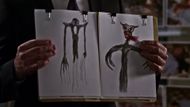Criminal Minds first aired on September 22, 2005. It has since then emerged as a prominent force in American crime drama. The show lures audiences into the world of tension-filled stories, intricate characters, and the exploration of the darkest aspects of the human mind.
Created by Jeff Davis and produced by CBS, the series follows the FBI’s Behavioral Analysis Unit, or BAU. This team of profilers doesn’t just solve crimes—they figure out what makes the criminals tick. Instead of just focusing on evidence, Criminal Minds explores the “whydunit.” It dives into the psychological drives and patterns behind violent acts.
More than 15 seasons—and with a reboot titled Criminal Minds: Evolution and a number of spin-offs—the series became a cultural phenomenon. It had won awards. It spawned international versions. And it created a devoted fan base that adores its combination of suspense, emotional complexity, and unsettling realism.
The actors changed over the years, but some characters had the respect of the fans: Aaron Hotchner, Spencer Reid, and Emily Prentiss. These agents carried the show. But Criminal Minds had another thing going for it as well. Its villains were impressive. Every episode—and occasionally full seasons—revolved around "unsubs," or unknown subjects. These killers fueled the mystery and heightened the stakes.
And one villain, above the others: Mr. Scratch. He wasn't only dangerous. He was unsettling. His backstory altered the show's tone and tested the BAU to its limits.
The following is a deeper examination of Mr. Scratch. Who is he? Why is he unique? And why do so many believe he's Criminal Minds' scariest villain?
Who was Mr. Scratch in Criminal Minds? The birth of a nightmare

Mr. Scratch, whose real name is Peter Lewis, first appeared in Criminal Minds Season 10. He was one of the BAU's most threatening nemeses. Unlike other unsubs who practice violence or have defined motives, Mr. Scratch operated on fear, manipulation, and technology.
Origins and motives
Peter Lewis was a mathematical prodigy and an accomplished hacker. Yet his life as a child was traumatic. As a foster kid, he watched his foster parents’ lives fall apart. Other kids falsely accused them of being Satanists. Peter was forced to testify falsely against his father, which led to his imprisonment and eventual death.
This experience colored Lewis's whole life. He didn't kill for profit or for pleasure. He wanted revenge. He wanted mayhem. And he had others do the dirty work.
The modus operandi: Hallucinations and hypnosis
It was the way Mr. Scratch attacked the mind that made him so terrifying. He produced a hallucinogenic drug that caused victims to hallucinate and see their worst nightmares. Under the effect of the drug, they were vulnerable to suggestion.
Lewis would lead them—occasionally hypnotize them—into acts of violence, even murder. The majority of victims could recall a dark, clawed figure. They referred to it as "Mr. Scratch," an old English folklore nickname for the Devil.
A master of technology and manipulation
Lewis didn't rest there. He was also a master hacker. He had access to the BAU's systems, could plant misleading evidence, and sabotage their investigations. He was always ahead of his time. He emerged from the shadows, manipulated the minds of the team against them, and remained at large through sheer strategy.
Why Mr. Scratch matters: The show's most twisted villain

A long-running adversary
Mr. Scratch wasn't your average unsub. Most of Criminal Minds' villains pop in and out during one episode. Not him. He appeared in 11 episodes over several seasons. That allowed the writers to develop him into an actual arch-nemesis. He wasn't merely another case—he was a persistent danger. You never knew when he might be back at it again.
His attacks were not merely physical. It hit the mind. Lewis learned about the BAU's fears and exploited them against the agents. He set up situations that made agents confront their worst fears.
Once, he even turned an agent against the rest of the team. His fixation on Aaron Hotchner became a prominent feature of the story. He set up Hotchner, painted him as dangerous, and even had him arrested.
A catalyst for change
The Mr. Scratch storyline shook everything up. The BAU had to rethink everything. They no longer relied on their typical profiling techniques. Lewis pushed their understanding of human behavior to the forefront. He tested them at work and in their lives outside the lab.
Inside the mind of Mr. Scratch

A portrait of a psychopath
Peter Lewis exhibits a lot of traits of psychopathy. He is not empathetic. He's a manipulator. He considers himself superior to all else. But what is particularly horrifying about him is that he is very aware of fear. He does not merely kill—he tortures. He exploits their minds. He makes them weapons.
Revenge as a driving force
All that Lewis does is a result of seeking vengeance. The lies that destroyed his family influenced his worldview. He felt he was entitled to cause pain because he had been previously hurt. That corrupting reasoning—the notion of justifying violence through prior suffering—is one found in countless actual offenders. It makes him feel unwholesomely authentic.
The devil's shadow: Symbolism and legacy
The title "Mr. Scratch" was not arbitrary. It's an old nickname for the Devil. By employing it, Lewis placed himself in the role of a willing villain. He wanted to be known as pure evil. The drug-induced demon his victims saw wasn’t just a hallucination. It was his calling card. He obliterated the distinction between horror and reality—and ensured no one ever forgot him.
What did Mr. Scratch do? His crimes and legacy

Lewis addicted victims to a strong hallucinogenic drug. Under the influence of the drug, they imagined they were confronting monsters. In reality, they were murdering actual people, often imagining it was in self-defense. The victims were left battered, bewildered, and traumatized.
Lewis did not only murder. He framed others for their crimes, even members of the BAU. Using his computer hacker skills, he manufactured cyber evidence and created false clues so that the truth became extremely hard to find.
He didn't rest there. Lewis attacked the team's loved ones. He exploited their fear. He pitted teammate against teammate. Every step was taken to disrupt the BAU from the inside out. Among his victims were Hotchner, Reid and Prentiss, who were all rescued.
Once captured, Lewis broke free in a string of orchestrated prison escapes. It wasn't chance—it was all part of his strategy. Each return was accompanied by new strategies, new prey, and greater risk. He always managed to stay ahead, with the team as well as the viewers second-guessing him.
What happened to Mr. Scratch? The end of a villain

Mr. Scratch's story concluded with the team he had harassed for years. After a prolonged and convoluted cat-and-mouse game, the BAU finally triumphed over him. They pinned him down. He died in the takedown. It wasn't merely a victory for the team—it was a catharsis for audiences who had watched his narrative play out over several seasons.
His death did not take away the damage. The trauma he inflicted lingered with the team. Hotchner especially bore the brunt of Lewis's games. The emotional toll became a motif in subsequent episodes. Lewis had gotten inside their heads. He made them second-guess themselves—and one another. The team needed to recollect, rethink their approach, and confront the emotional toll of the job they do.
What makes Mr. Scratch Criminal Minds' most twisted villain?

Mr. Scratch didn't simply kill. He manipulated. He hacked minds and machines. His crimes combined profound psychological understanding with cutting-edge technology. Hallucinogens and hacking made him new and terrifying in ways the BAU had never witnessed. He wasn't simply a threat. He was an entirely new type of nightmare.
Mr. Scratch changed the direction of Criminal Minds. He transitioned Criminal Minds from week-to-week case tales to something richer. His lengthy arc allowed the show to delve into larger character developments, riskier narratives, and an ever-present tension. He didn't only haunt the team—he defined the show.
Fans picked up on it. So did reviewers. Mr. Scratch is regularly listed as one of the series' most unsettling villains. He penetrated people's minds, both on screen and in the viewer. His episodes fueled theories, arguments, and a full-blown fixation. He's among the worst of the worst—and usually tops the list.
